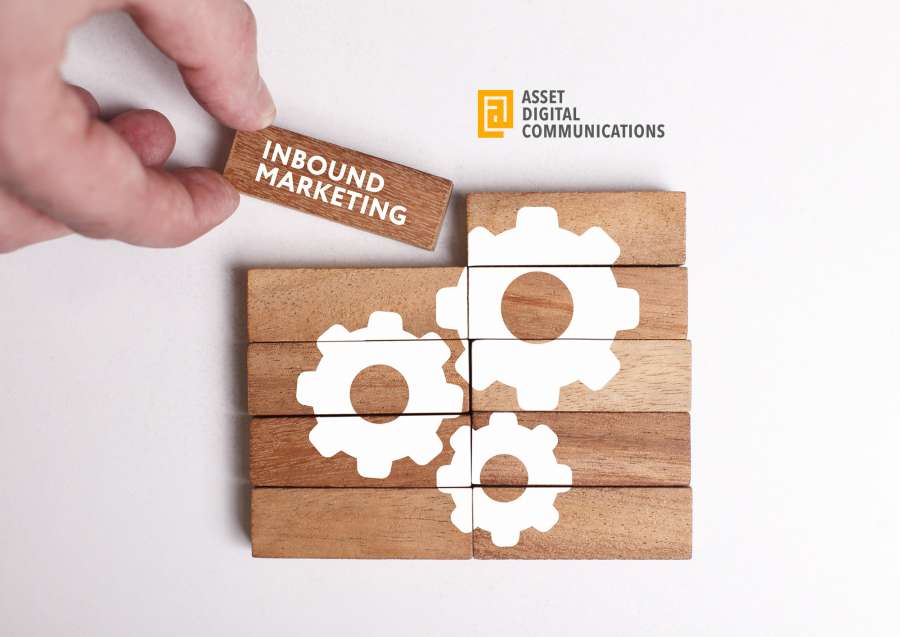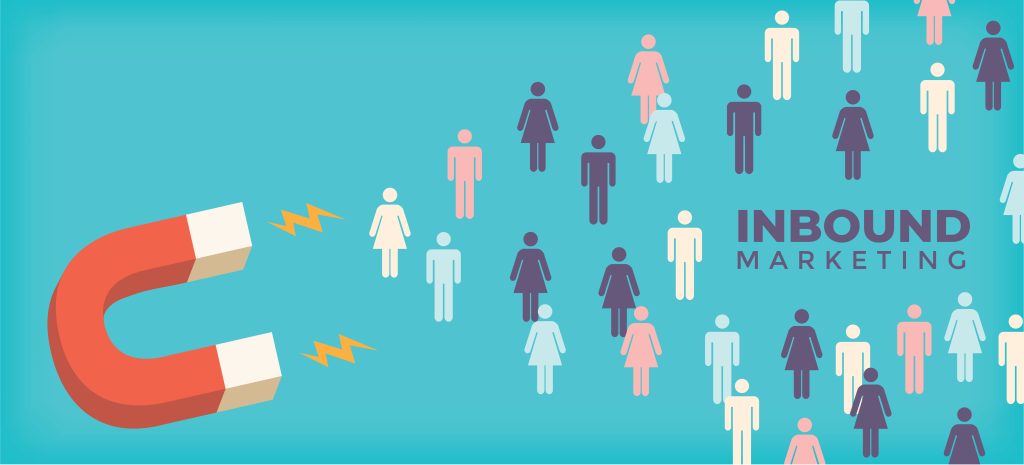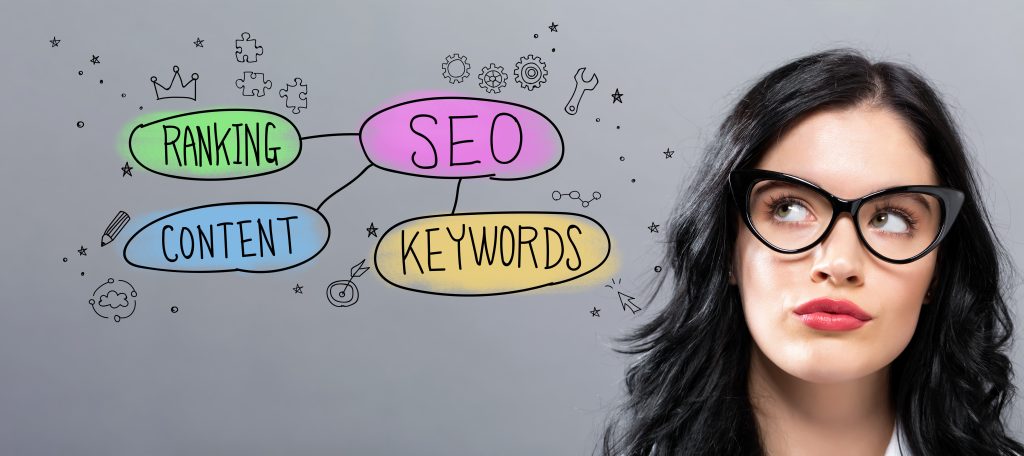Amplify Your Inbound Marketing With SEO
If you are doing inbound marketing without using SEO, you should think about incorporating it into your strategies. This will help you increase your impact, reach a larger audience at attract new customers.
This article explores advanced digital marketing strategies, focusing on how SEO in inbound marketing can boost online growth. It builds on the basics of digital marketing that many already know.
Marketers in industrial manufacturing may face unique challenges because there are often multiple decision makers in B2B businesses. Many of these marketers are constantly striving to create inbound strategies that deliver improved lead quality and conversion rates. This article provides some fresh new ideas for you.
Let’s begin by saying that both Inbound Marketing and SEO are tools for customer acquisition. Many SEO practices can strengthen impact and restore growth and leads as part of your Inbound Marketing Strategy. We will look at each practice separately and then discuss strategies.
What is Inbound Marketing?
Inbound marketing is best thought of as a set of tools to power growth. The work of Inbound marketing is focused on creating meaningful, lasting relationships with prospects and customers.
One way to assist users during their buyer journey is by developing website content that directs them through each stage. This content can provide valuable information and resources to help users make informed decisions. By offering guidance at each step of the process, users are more likely to successfully navigate through the buyer journey. This can ultimately lead to increased conversions and customer satisfaction.
By writing top quality content for these audiences, you give them something tremendously useful to them and they will naturally return to your website frequently. The information on your website helps people understand their problem and reach their goals during the buying process.
As an example, consider the purchase of an air purification system for your home. When you come across ample information that answers your questions, you’re very likely to save the site in your favourites and return to it again as you move through your evaluation process.
Three Stages of Inbound Marketing
The inbound marketing methodology can be measured by its ability to attract, engage, and convert. Let’s take a closer look:
Inbound Marketing to Attract Valuable Audiences
This step involves bringing the right audience to your valuable content, establishing you as a trusted source of knowledge and expertise. In inbound marketing strategies, SEO is often part of the first stage, which is involved with attracting new high value visitors to your website.
Inbound Marketing to Engage Valuable Audiences
Provide website visitors and social media followers with helpful content and tools that align with their needs and address their pain points or key challenges at each stage in their buyer journey. Over time, they come to see you as a valued source and provider of essential solutions.
Inbound Marketing to Convert Valuable Audiences
Over time, you build your credibility as a brand. The valuable audiences that your SEO and inbound marketing work has built up over time come to see your business as a trusted source. As their understanding of your offerings increase, they convert into customers.
Their success is your success. The law of reciprocity is activated. People who have been consuming your free content and offers will be more likely to reciprocate by becoming your customer. They will choose to buy your offering because they have grown to trust your business, and they will acknowledge the free value they’ve received in their buyer journey by converting to paying customers.
The Value of Inbound Marketing
In traditional or “outbound marketing” efforts are made to connect with potential customers. These outbound tactics can include cold calling, cold emailing and paid advertising as a few examples. With outbound, the potential customer is interrupted to receive your ad or message. Inbound marketing is the opposite in many ways.
Inbound marketing, on the other hand, is a strategy that revolves around bringing new or existing customers to your website. These individuals are shopping for a solution and are using the search engines to find answers to their unmet needs.
Inbound is a broader marketing concept that includes SEO, but also involves other components like social media, lead generation, content creation, and various other strategies which we’ll discuss. By integrating these various elements, inbound marketing’s success in attracting, engaging, and converting prospects into loyal customers are all measurable using analytics and a range of software tools that track online behaviour.
Ready to level up your Inbound Marketing?
Get a Quote
What is SEO?
SEO, short for search engine optimization, is a strategy to improve your website’s visibility on search engines like Google and Bing. The better your SEO, the higher your site will rank on the search engine results page (SERP).
A search engine results page, or SERP, is the page you see on your browser after entering a query into a search engine. This page lists the most relevant results based on your keywords. SERPs are crucial because being higher on these pages means more visibility for your brand. When your offering is presented in a search result, it can potentially bring more traffic to your site. The ultimate goal of SEO is to get your website to the top position on SERPs, making it easier for potential customers to find you.
Key Elements of SEO
Search engine optimization is a range of activities aimed to grow the volume of quality organic traffic to your website. There are six key elements which we describe below.
Keyword Research & Plan
Keyword research involves identifying the terms and phrases that your target audience uses when searching for products, services, or information related to your business. It helps you to plan your content and optimize your website, ensuring it matches what potential customers are searching for.
Website Optimization
Website optimization refers to improving various elements of your website to enhance its performance and ranking on search engines. This includes optimizing page load speed, ensuring mobile-friendliness, and improving the overall user experience.
Creating Optimized URLs
Creating optimized URLs means structuring your website’s addresses in a way that makes them clear, descriptive, and easy for both users and search engines to understand. This helps improve your site’s SEO by making it easier for search engines to index your pages.
Content Marketing
Content marketing involves creating and sharing valuable, relevant content to attract and engage your target audience. By providing high-quality content, you can improve your website’s SEO, build authority, and establish strong relationships with your audience.
SEO Titles, Headlines, and Descriptions
Optimizing titles, headlines, and meta descriptions is crucial because these elements influence both search engine rankings and click-through rates. Well-crafted titles and descriptions can make your content more appealing to users and help search
Link Building
Link building is the process of acquiring hyperlinks from other websites to your own. These backlinks serve as votes of confidence, signalling to search engines that your content is valuable and trustworthy. High-quality backlinks can significantly enhance your site’s authority and improve its ranking on search engine results pages (SERPs). Effective link building involves creating compelling content that others want to link to, as well as actively reaching out to relevant sites for backlink opportunities.
SEO Inbound Marketing Strategies
While there are different methods of using SEO to get visitors to your website, the over riding goal of SEO is to use valuable content to attract organic traffic and leads to your business. Top SEO agencies are experts in full spectrum SEO and can provide new solutions and insights to drive more traffic and leads to the website.
SEO involves many steps and tools. Here is a short list of key SEO activities that should be part of any SEO Inbound Marketing plan.
- Carrying out keyword research to understand the search phrases being used by people who you would like to attract as new or existing customers
- Modifying your website so that your main website pages are aligned to rank for these valuable search phrases
- Understanding the latest trends in order to find fresh new keyword opportunities to bring new users to your website
- Creating content on your website as your knowledge of your ideal customer and their search intent improves
- Applying technical SEO skills to maintain website speed and improve user experience
- Building the authority of your website domain through link building activities
- Ongoing analytics measurement of your website traffic to grow your traffic and confirm that your SEO strategy continues to be competitive
What is Inbound Marketing in SEO?
SEO is such an integral part of Inbound Marketing that a new term has emerged: Inbound SEO. Its role is to build brand awareness as measured by the growth in new website visitors. Inbound SEO helps build top of funnel opportunities.
Inbound SEO is the practice of optimizing your website on an ongoing basis to attract visitors organically through search engines. Unlike outbound strategies which push messages to a broad generalized audience, inbound SEO focuses on drawing in highly targeted users who are actively searching for information, products, or services related to your business.
By creating valuable content, optimizing it for relevant keywords, and ensuring a positive user experience, inbound SEO helps convert visitors into leads and customers. The sophistication of inbound SEO relies on a deep understanding of your target persona or ideal customer. While some companies have embarked on exercises to develop their target persona, very few are able to translate the efforts into measurable success with organic traffic and leads.
If you’re interested in developing more effective persona, let us know. We have an expert team that can guide you through the process.
Inbound Marketing & The Buyer Journey
Since most purchases begin with an online search, it is essential to break down the stages of this search or buyer journey. At each stage, potential customers ask different questions related to that stage.
In the early journey, they are typically searching for options and general information. As they move into the mid-journey stage, they start evaluating specific options and comparing different solutions.
In the late journey, potential customers focus on assessing specific vendors and their solutions, examining the company behind them, and wanting to see contracting and onboarding details. By recognizing and addressing the questions they ask at each stage of their decision-making process, you can create targeted content that guides them seamlessly from initial interest to final purchase.
Need help with your inbound marketing SEO strategy?
Schedule a Complimentary Consultation
SEO Inbound Strategies – Getting the Best from SEO and Inbound
Content Marketing
One of the most powerful ways to increase your SEO rankings is with content. Content types such as blog posts, infographics, instructional guides, and videos are effective in strengthening website performance over the long term.
Google has developed a set of guidelines which it has published. They use these guidelines when they crawl websites to evaluate the quality and credibility of website content. The best content is helpful, reliable, people first content and it will be rewarded by appearing at the top of the SERPs for relevant keywords.
When your website visitors find valuable articles on your website, your credibility and their trust in you will build. And they’re likely going to return to your website again for more information on the topic. These are your next customers. When they are at the decision stage, they’ll present as a lead, and one who has already decided they want to buy from you.
Improve Existing Content for More Traffic
The website blog can be a highly valuable asset of the business. A top-quality blog will climb in search rankings to generate significant traffic for the business. These top quality top performing blogs are capable of generating a high volume of leads.
Over time the blog will grow as more articles are written. SEO is not static. Other competitors are also competing for similar keywords, and may be writing article to rank for similar keywords. Therefore, it’s important to carry out regular reviews of your content. Schedule content upgrades to strengthen any articles which are not performing well, or where performance has fallen.
Social Media
While social media marketing won’t directly influence SEO rankings, it can impact factors that affect your rankings. Google recommends that you tell people about your site, and the social media networks are a great place to find like-minded people. By maintaining a presence in online communities, you’re widening the pool of brand advocates.
Social media is capable of driving traffic to your site. If you share links to your page on your social media profiles, you can drive more traffic to your page.
When you write blog articles, make sure you share these on in your social media feed and company page. Many of those interested in your company and its offerings are on the social platforms regularly. Therefore sharing your latest content and news with them on social creates the opportunity to spread your content further afield.
The social platforms are not all created equal. Select those platforms that align most closely with your ideal audiences. Ask your clients what platforms they use regularly. When you show up in their feeds, you’ll keep your brand top of mind, and increase the likelihood that they’ll think of you when they are ready to purchase again.
Use Keywords Customers Are Searching For
The area of keyword strategy is often not well understood. A high-volume keyword is not necessarily what you want to try to rank for. The highest volume keywords are also the most competitive.
In other words other companies have invested years and many dollars to gain their high ranking position for these coveted keywords. It was not earned overnight.
The search algorithms have become quite efficient in understanding search intent. This has opened up opportunities to write content using the search phrases that people are using, in other words, long tail keywords.
If you create excellent quality content that answers the questions your customers are asking, the search algorithms will reward the content with organic traffic. Conversely, if your customers aren’t searching for those terms, that piece of content is not useful to them. It won’t bring you significant traffic or leads. So rather than putting effort into writing to high volume keywords which you have a slim chance of ranking for, instead tell people about your offerings in natural language that is easy to understand, genuine and helpful.
There are many ways to get started. Interviewing your customers or your sales team can reveal ideas. Also, tools like Google Trends reports on search terms are trending as a source of new ideas. There are many ideas sitting in your analytics data awaiting your discovery.
Email Marketing
There are many reasons to establish a newsletter or regular email marketing program. Often businesses will hesitate because setting it up and managing it takes time and effort. However email marketing programs deliver one of the best ROIs consistently for decades.
Website Chatbots
One of the best ways of generating website leads is with a live chatbot for user guidance. Chatbots can be staffed with real people, and increasingly they are an artificial intelligence-based tool that interacts with your website visitors in real-time. They can assist users in navigating the site, finding information, and resolving queries. By simulating a human conversation, chatbots can provide instant answers to frequently asked questions, offer personalized recommendations, and guide users through various processes, such as product selection or troubleshooting issues.
A website chatbot can help your inbound marketing efforts by providing real-time, personalized assistance to visitors. Here’s how:
Engage Visitors
Chatbots can greet visitors as they land on your website and guide them to relevant content based on their needs and interests. This immediate engagement keeps potential leads on your site longer, increasing the likelihood of conversion.
Answer FAQs: By instantly addressing frequently asked questions, chatbots reduce friction in the buyer journey. This improves user experience and helps potential customers quickly find the information they need.
Qualify Leads
Chatbots can ask visitors qualifying questions to determine their needs and stage in the buyer journey. This helps in segmenting leads and prioritizing high-quality prospects for further engagement.
Content Delivery
By understanding user queries and interests, chatbots can recommend relevant articles, blog posts, and resources. This personalized content delivery helps in educating potential customers and nurturing them through the decision-making process.
Capture Contact Information
Chatbots can collect contact details from visitors in a non-intrusive manner, allowing your marketing team to follow up with targeted communications and offers.
24/7 Availability
They are ready to respond to a user regardless of the time of day or day of the week.
These chatbots should not be underestimated. They enhance the user experience, improve customer satisfaction, and can generate website leads.
SEO Inbound marketing provides a new lens and set of tools to generate new traffic and leads for your business. If you’d like a fresh set of eyes on your inbound marketing and SEO strategy, we’re no further than a click away.







